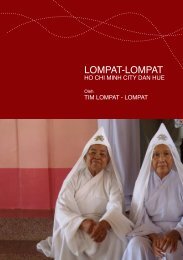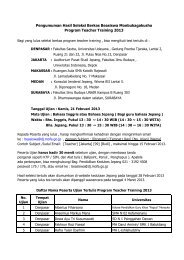9700_y16_sy
9700_y16_sy
9700_y16_sy
You also want an ePaper? Increase the reach of your titles
YUMPU automatically turns print PDFs into web optimized ePapers that Google loves.
Cambridge International AS and A Level Biology <strong>9700</strong> <strong>sy</strong>llabus General <strong>sy</strong>llabus requirements and information<br />
15. Determine: often implies that the quantity in question cannot be measured directly but must be found<br />
by calculation, substituting measured or known values of other quantities into a standard formula. It may<br />
also be used when the candidate must carry out a procedure to find a numerical answer. For example,<br />
the candidate might be asked to find the energy absorbed by a plant and calculate its efficiency.<br />
16. Estimate: give a reasoned order of magnitude statement or calculation of the quantity in question,<br />
making any necessary simplifying assumptions about points of principle and about the values of<br />
quantities not otherwise included in the question.<br />
17. Show: make an algebraic deduction to prove a given equation. The candidate must state clearly the<br />
terms being used.<br />
18. (a) Sketch, when applied to graph work: implies that the shape and/or position of the curve only needs<br />
to be qualitatively correct. However, the candidate should be aware that, depending on the context,<br />
some quantitative aspects may be looked for, such as passing through the origin or having an<br />
intercept, a<strong>sy</strong>mptote or discontinuity at a particular value. On a sketch graph, the candidate must<br />
show clearly what is being plotted on each axis.<br />
(b) Sketch, when applied to diagrams: implies that simple, freehand drawing is allowed. However, the<br />
candidate should take care over proportions and should show important details clearly.<br />
19. Compare: give both the similarities and differences between things or concepts.<br />
20. Recognise: identify facts, characteristics or concepts that are relevant and/or appropriate to<br />
understanding a situation, event, process or phenomenon.<br />
21. Classify: group things based on common characteristics.<br />
In all questions, the number of marks are shown on the examination paper and candidates should use these<br />
as a guide to how much detail to give. When describing a process, the candidate should use the number<br />
of marks to decide how many steps to include. When explaining why something happens, the candidate<br />
should use the number of marks to decide how many reasons to give, or how much detail to give for each<br />
reason.<br />
Back to contents page<br />
www.cie.org.uk/alevel<br />
75





